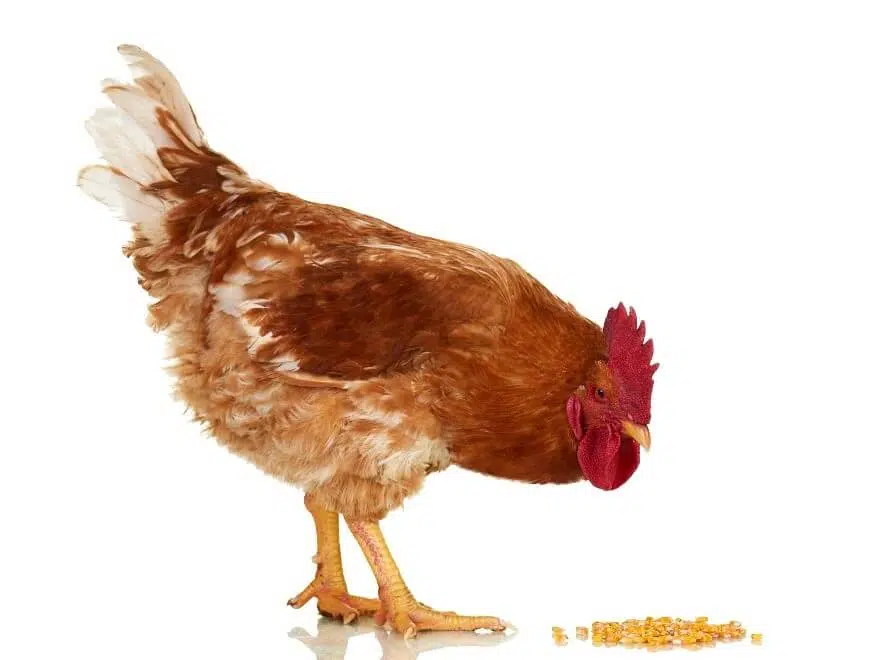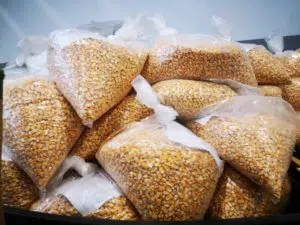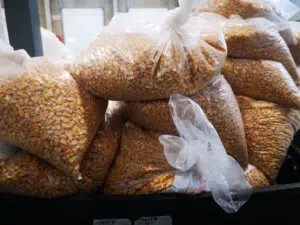Maize analysis
Chemuniqué is striving to identify and quantify differences in South African maize such as energy, hardness, and intrinsic factors of individual maize samples by investing in a number of research projects in this field.
Understanding the composition of the primary feed ingredient in your production system provides a competitive advantage, as formulations can be tailored more accurately to meet the nutritional need of your animals, which means optimum utilisation of the feed, improved performance, and reduced wastage.
The cereal grain maize from Zea mays L., which is also known as corn in some countries, contributes approximately 65% of the apparent metabolisable energy (AMEn) to many broiler diets. Research has shown that the AMEn value of maize can vary in excess of 100 kCal/kg (0,42 MJ) from batch to batch due to changes in chemical composition and physical kernel characteristics such as kernel hardness and vitreousness. There are major potential economic implications to poultry producers when the AMEn value of maize varies unexpectedly due to an over- or undersupply of dietary energy, since this leads to either reduced or excess feed intake, poor production performance, poor feed conversion ratios, imbalances in the protein-to-energy ratio, and feed wastage. Therefore, it is of great importance that we can accurately and rapidly estimate the AMEn value of maize used in feed formulation on a real-time basis.
DuPont, in collaboration with Pioneer, has developed calibrations based on near-infrared transmittance (NIT) from over 300 different maize samples fed to broilers. The AMEn values of these maize samples were determined in vivo, while the same samples were scanned using an NIT instrument. The NIT is able to accurately and rapidly determine the AMEn value of maize with a prediction accuracy of under 10 kCal/kg. This allows a more accurate approach to feed formulation versus the use of prediction equations such as the CVB or Brazilian equations that only account for differences in the nutrient composition of maize, and do not consider intrinsic factors of the kernel that can affect digestibility.
Our objective is to offer an analytical service to Chemuniqué customers that will allow us to provide nutritionists with rapid solutions to make better decisions relating to seasonal changes in the nutritive value of maize on poultry.
Sample analyses will be performed at the Chemuniqué laboratory using a Foss NIT instrument (Infratec™ 1241 Grain Analyser, Foss, Denmark). This method requires no sample preparation, is quick and accurate, and can be used to analyse whole kernels, improving measurement repeatability and sample preservation.
- Proximate composition analysis using an NIT calibration developed and provided by DuPont Pioneer predicts moisture percentage, gross energy, AMEn, crude protein percentage, crude fat percentage, and hectolitre mass.
- An optional additional analysis of kernel hardness and vitreousness using a second NIT calibration is available.
- Relative benchmarking of the maize sample relative to the annual average and range of AMEn values in South Africa and a short interpretation of results will be provided.
Results are reported electronically within five days of receiving the sample.
NIT and NIR maize analysis brochure
SOP and maize analysis form (local)
SOP and maize analysis form (international)
Maize import permit
Our experts

Sibongiseni Nkabinde
NIR and formulations analyst
"*" indicates required fields















